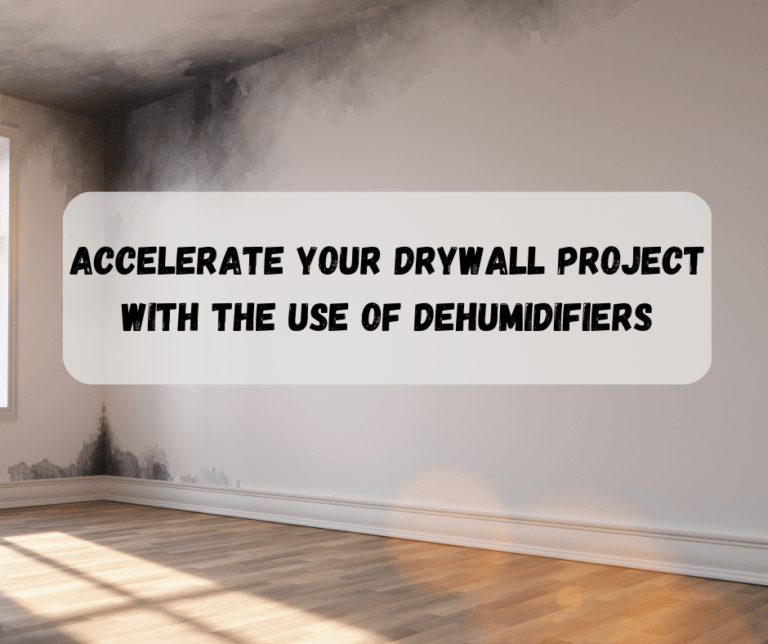How to Repair Drywall with Mesh Tape
Repairing drywall may seem daunting, especially if you’re doing it for the first time. However, my recent experience with a small renovation project in my home taught me invaluable lessons about the art of drywall repair, specifically using mesh tape. I discovered that with the right tools and techniques, anyone can tackle this task with confidence.
My DIY Journey: A Real-World Example
During a recent home improvement effort, I noticed some unsightly cracks and holes forming on my living room wall. It struck me that these imperfections had been neglected for far too long. Armed with determination, I decided to tackle the repairs myself. Upon researching the best methods, I learned that using mesh tape for drywall repairs would aid in creating a sturdier finish than traditional methods.
What is Mesh Tape?
Mesh tape is a self-adhesive tape made of fiberglass strands, often used in drywall repairs to cover joints and seams. Unlike paper tape, mesh tape is excellent for reinforcing areas that may be prone to cracking, making it ideally suited for my repairs.
Why Choose Mesh Tape for Drywall Repair?
- Durability: Mesh tape provides robust support for patched areas, preventing future cracks.
- Ease of Use: It is easy to apply and requires less skill than paper tapes.
- Versatility: Works well in a variety of circumstances—whether you’re repairing small holes or larger patches.
Tools and Materials Needed
Before diving into the repair process, gather the following materials:
- Mesh Tape: Fiberglass Mesh Tape on Amazon
- Joint Compound: A lightweight option like the 3.5 Qt Plus 3 Lightweight Joint Compound is recommended.
- Utility Knife: For trimming the mesh tape.
- Drywall Knife: A 6- or 12-inch drywall knife works well for spreading the compound.
- Sanding Block: Essential for smoothing out the dried compound.
- Screwdriver: For securing any loose drywall.
- Dust Mask: To minimize inhalation of dust during sanding.
Step-by-Step Guide to Repairing Drywall with Mesh Tape
Step 1: Remove Loose Material
Begin by checking the affected area for any loose material. Use your utility knife to scrape away damaged drywall, making a clean edge around the hole or crack.
Step 2: Cut the Mesh Tape
Measure and cut a piece of mesh tape to cover the area you’ll be repairing, ensuring it extends at least 1 inch beyond the damaged section on all sides.
Step 3: Apply the Tape
Press the mesh tape onto the area, ensuring a firm adhesion. Unlike paper tape, mesh tape does not require additional adhesive.
Step 4: Apply Joint Compound
Using your drywall knife, spread a thin layer of joint compound over the tape. Ensure it fully covers the tape and feather it out onto the wall surrounding the repair. This process helps to blend the new compound with the existing wall.
Step 5: Let It Dry
Allow the joint compound to dry completely according to the manufacturer’s recommended drying times. This usually takes several hours, but overnight drying is ideal.
Step 6: Sand the Area
Once dried, use your sanding block to smooth out the surface. Always start with a finer grit and move to coarser grit for deeper imperfections.
Step 7: Apply Additional Coats
For best results, apply 1-2 additional layers of joint compound, letting each coat dry before sanding. Each layer should be wider than the previous to achieve a smooth, seamless finish.
Step 8: Final Sanding and Priming
After the final coat is dry and sanded smooth, prime the area before painting. This ensures that the paint sticks well and the repaired area blends beautifully with the rest of the wall.
Common Mistakes to Avoid
- Applying the Tape Too Loose: Ensure the mesh is snug against the wall, as loose sections can lead to cracks later.
- Over-sanding: It can be tempting to oversand for perfection, but doing so can damage the mesh tape and create uneven edges.
- Insufficient Drying Time: Rushing the drying process can cause the compound to crack.
Pro Tips for Success
- Use a Clean Knife: Always ensure your drywall knife is clean to avoid embedding dirt into the compound.
- Temperature Matters: Ensure the room is at a consistent temperature conducive for drying, as cold environments can delay setting.
- Consider Dust Management: Use a compact dust extractor or a vacuum attachment on your sander to keep the area clean.
Expert Insights: The Benefits of Professional Advice
According to seasoned drywall contractors, mesh tape is essential for amateur and professional repairs due to its flexibility and strong hold. They recommend practicing techniques on scrap pieces of drywall before tackling actual repairs.
Conclusion: Embrace Your Inner DIY Professional
Repairing drywall with mesh tape not only saves you money but also empowers you to enhance your home aesthetically. The satisfaction from completing a DIY project can be quite rewarding. Whether you’re fixing small holes or larger patches, following these steps will help ensure a successful repair.
Have you encountered a drywall project that seemed challenging? What tips or techniques have you learned in your repairs? Feel free to share your experiences in the comments below!
Share & Resources
If you found this guide helpful, please share it on Pinterest, Facebook, or Reddit! Your support helps others find useful drywall repair techniques.
Contractors, home improvement bloggers, and DIY forums: Feel free to link back to this article to help your audience with expert drywall repair tips.
Together, let’s empower our communities with the knowledge to improve our homes, one drywall project at a time!
For more tips and techniques, check out these articles:
Happy repairing!

